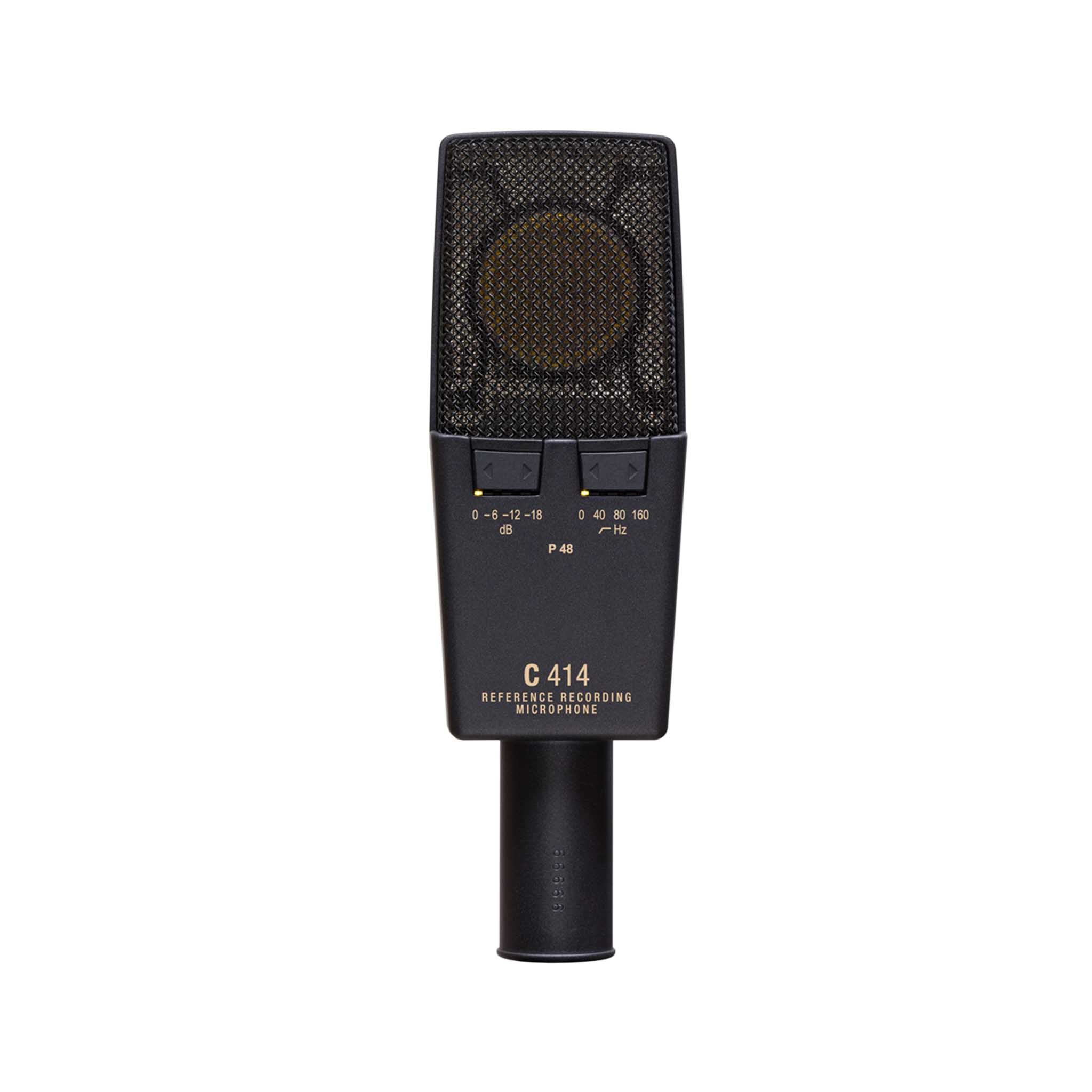The AKG C414 XLII multipattern condenser microphone is a top - notch choice for all audio applications. It provides nine polar patterns, enabling you to capture the perfect sound in any situation. A peak - hold LED is there to show even the briefest overload peaks. For live - sound gigs and permanent setups, you can easily disable all controls for hassle - free use. The C414 XLII stands out from the C414 XLS mainly because of its capsule. It offers a slight presence boost and remarkable spatial reproduction, similar to the iconic AKG C12 from 1953. Specifications include an audio frequency bandwidth of 20 to 20000 Hz, an equivalent noise level of 6 dB - A, a sensitivity of 23 mV/Pa, and a signal - to - noise ratio of 88 dB - A. It also has preattenuation pads of - 6 / - 12 / - 18 dB and bass cut filters of 160 / 80 / 40 Hz. With an electrical impedance of 200 Ohms and a recommended load impedance of 2200 Ohms, it has various polar patterns like omnidirectional, wide cardioid, cardioid, hypercardioid, and figure of eight. It operates on a voltage of 44 to 52 V and a current of 4.5 mA, and features a balanced XLR male 3 - pin audio output. It comes in a dark gray and gold finish, with dimensions of 38x50x160mm and a net weight of 300g.

Using the AKG C414 XLII microphone is straightforward. First, connect it to your audio device using the balanced XLR male 3 - pin output. Make sure your device can supply the required voltage between 44 and 52 V and a current of 4.5 mA. Select the appropriate polar pattern according to your recording needs. For example, use the omnidirectional pattern if you want to pick up sound from all directions. When you're doing live - sound work or setting up a permanent installation, disable all controls to avoid any accidental changes. As for maintenance, keep the microphone in a clean and dry place. Don't expose it to extreme temperatures or humidity. Regularly check the connections to ensure they are secure. If you notice any issues with the sound quality, like unusual noise or a drop in sensitivity, it might be time to have it checked by a professional.